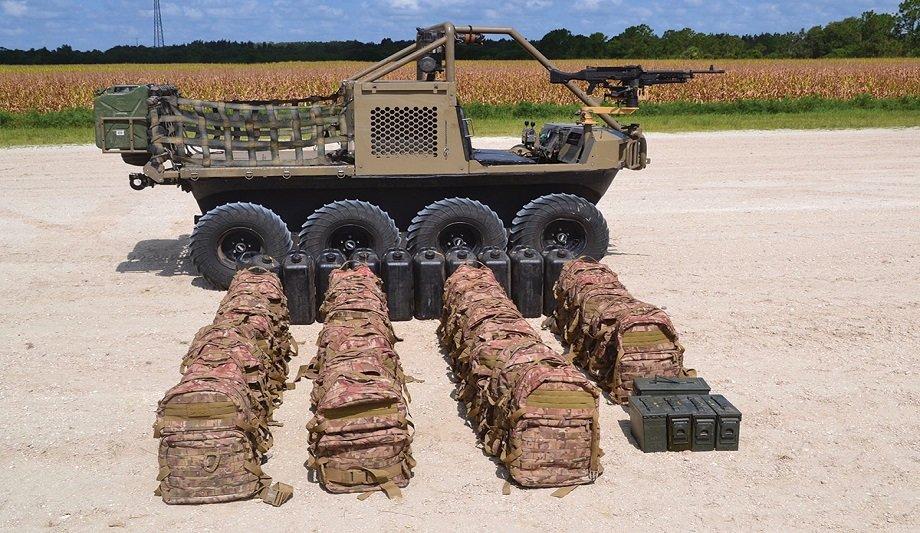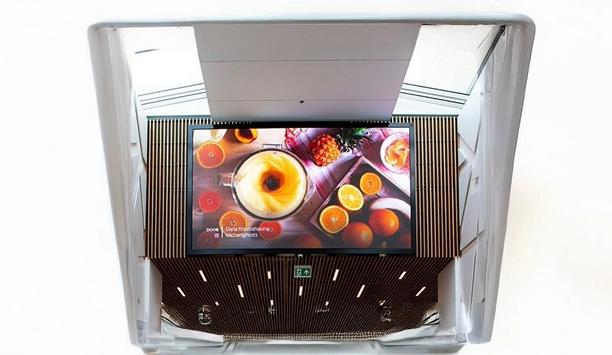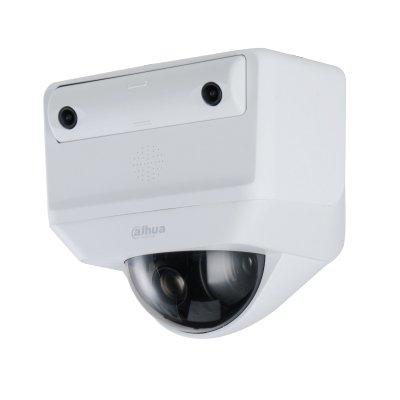Light forces by their very nature have a high degree of strategic and operational mobility as they are capable of being deployed into and within theatres by air and aviation assets. They are optimised for complex terrains such as jungles, mountains, and the dense urban environment where the terrain may prevent the deployment of armoured and mechanised platforms or speed necessitates the rapid deployment of forces by air.
However, light forces are limited in their tactical agility and operational endurance by the quantity of equipment and combat supplies that they can physically carry.
Future Integrated Soldier Technology (FIST) project
In 1950 SLA Marshal published “The Soldier’s Load and the Mobility of a Nation.” It concluded that a soldier should carry no more than 1/3 of their body weight. UK research in the early 2000s in support of the Future Integrated Soldier Technology (FIST) project and the Platoon Combat Experiment 2013-15 reached similar conclusions.
For the average soldier that is a load of no more than 24 kg. However, with body armour, radios, batteries, water, anti-armour weapons, machine gun ammunition, etc patrol loads often exceed 50 kg per soldier.
Situational awareness
Excessive loads are a contributing factor to the incidence of musculoskeletal injuries (MSKI)
With heavy loads soldiers can cover less ground, they are less agile under contact, and fatigue impacts their situational awareness and their ability to deliver accurate fire.
This leads to a vicious circle; less accurate fire means soldiers have to carry more ammunition which makes them fatigue quicker, leading to less accuracy and so on. Excessive loads are a contributing factor to the incidence of musculoskeletal injuries (MSKI). In 2017 1079 soldiers were medically discharged from the British Army due to MSKI.
All Terrain Support Vehicle
HIPPO Multipower has developed a family of All Terrain Support Vehicles (ATSV) to enable light forces to actually “fight light.” The vehicles are available in 8x8 diesel-hydraulic and 6x6 diesel-electric (capable of operating with very low acoustic and thermal signature). Both models of ATSV have four key characteristics:
- Payload
- Mobility
- Exportable power
- Optional robotics
Payload:
The ATSV can tow heavy weapons such as 105mm artillery, recoilless rifles, or 120mm mortars
The HIPPO ATSV can carry 750 kg of cargo on the back decks (in addition to driver and passenger). This is sufficient to support an infantry platoon for up to 72 hours or smaller patrols for even longer periods. By carrying the majority of a patrol’s gear on the vehicle, the soldiers can “fight light,” allowing them to stay tactically agile, patrol further and faster yet still have the mission essential equipment ready to use as and when required.
The ATSV can also tow a trailer weighing up to 2000 kg. HIPPO can supply an amphibious trailer with a payload of 1500 kg of cargo. The ATSV can tow heavy weapons such as 105mm artillery, recoilless rifles, or 120mm mortars; delivering battle-winning fire support in remote areas.
Mobility:
The HIPPO ATSV has excellent operational and tactical mobility. It can be delivered to the area of operation by cargo aircraft (eg C-130), internally transported by support helicopter (CH-47 or CH-53), sling loaded by utility helicopter (UH-60), carried on a military “flat rack” or towed behind a host vehicle (SUV or light truck).
The HIPPO ATSV has excellent tactical cross-country mobility. Skid steer makes it highly manoeuvrable in heavily wooded and jungle terrain with the strength to knock over smaller trees. The all-wheel drive (either 6x6 or 8x8) provides excellent traction in mud, sand, rocks, and swamp; even with a full 750 kg payload.
A track kit can be fitted for deep snow. ATSV has a low centre of gravity/high static stability which allows operation on steep slopes. The basic vehicle is amphibious with drive-in still water being delivered by the wheels. For faster-moving water, and where heavier payloads are required, the ATSV can be fitted with a rigid inflatable boat (RIB) kit and outboard motor to provide greater buoyancy and propulsion.
Exportable Power
ATSV can also produce hydraulic power and compressed air making it the ideal platform for air assault engineers
The last decade has seen exponential growth in the number of electronic devices carried by dismounted soldiers – radios, ECM, GPS, night vision, and situational awareness. While each piece of technology assists the soldier in their duties it comes at a price – weight. It also places a burden on the resupply chain as every device needs to be supplied with batteries.
The HIPPO ATSV has a 5kW generator that can export power at 24VDC, 110VAC, or 230VAC. It can be coupled with high-capacity batteries for the silent watch. HIPPO Multipower’s strong pedigree in power generation applications means that the ATSV can also produce hydraulic power and compressed air making it the ideal platform for air assault engineers and assault pioneers. The addition of a backhoe could ease the burden of preparing defensive positions.
Optional Robotics:
HIPPO ATSVs are capable of being operated by remote control and/or autonomous software. This allows robotic platforms to be used for repetitive tasks such as perimeter security patrols or routine resupply, more efficient use of manpower.
Robotics can also be used to remove an operator from harm’s way in high-risk situations eg ammunition resupply, casualty evacuation, surveillance, and route proving missions. For the British Army Robotic Platoon Vehicle (RPV) project, HIPPO has supplied vehicles that are capable of:
- Line of sight remote control
- Camera-based teleoperations
- Waypoint-based navigation with obstacle detection, obstacle avoid (ODOA)
- “Follow me” mode
- Mule – the vehicle “learns” a route and then repeats it without human input
- Manned operation: Retaining the ability of a human operator to sit in the vehicle and drive provides the system with redundancy in case of extreme complex terrain, heavily contested electromagnetic spectrum (eg GPS denied), and strict Emission Control Measures (EMCON) which preclude the use of radio transmissions or battle damage to key electronic components.
Exportable Power Upgrades for Utility Task Vehicles
HIPPO Multipower, with input from FOSOV, has developed a 3-stage generator that puts out up to 5kW of electrical power
Utility Task Vehicles (UTV) and Ultra Lightweight Tactical Vehicles (ULTV) such as the MRZR are in service with many militaries around the world. HIPPO Multipower, with input from FOSOV, has developed a 3-stage generator that puts out up to 5kW of electrical power (at 24 VAC) running off the power plant of the vehicle. This provides the power to run battery charging, electronic countermeasures, power tools, C-UAS jammers, etc.
At less than 30 kg, the generator fits below the payload area of the vehicle leaving OEM specifications of the payload area unchanged. The HIPPO Multipower generator is easily installed by base motor pools in less than a day.
Multipower Solutions for Military Engineers
HIPPO Multipower is a program of record suppliers of multi-power generators to the US Army. The HIPPO Complete Power Solution (CPS) delivers electric, hydraulic, pneumatic, and welding tool circuits from a single piece of equipment.
The CPS can be ground mounted or fitted to the back of a vehicle (such as a High Mobility Multipurpose Wheeled Vehicle (HMMWV)).



















